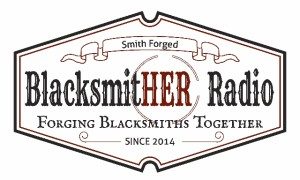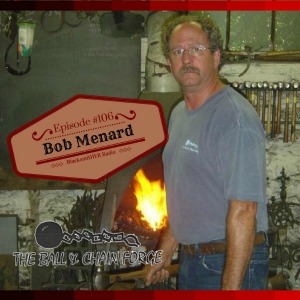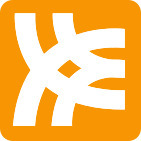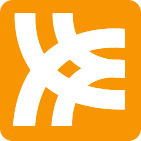Today I have Bob Menard, owner of the Ball and Chain Forge, which is mainly a custom architectural blacksmith shop in Portland Maine. He has been in business since 1990. He is also the editor of the NEB’s quarterly newsletter. Today we talk about his beginnings, production work, 180 lb plant hooks, what the ?.and collaborative artwork projects. Bob also gives us some golden nuggets about business insurance for blacksmiths.
Today’s episode sponsorship provided on behalf of New England Blacksmiths, the ABANA affiliate serving Connecticut, Massachusetts, Vermont, New Hampshire, Maine and Rhode Island.
Check us out at
http://www.newenglandblacksmiths.org/
In fact they have an event comping up called the Age of Iron at Hancock Shaker Village, Pittsfield, MA it’s happening the 1st weekend in August, 5th and 6th for the whole weekend.
And here’s an insider’s tip for my listeners, any visitor that says they are there for the “Blacksmithing demonstrations”, or for the “Age of Iron” will get the discounted group rate for admission to the village, this includes all exhibits, not just the Blacksmithing demo. For more details of this event go to their website www.hancockshakervillage.org
For further details contact Cindy Dickinson at the village, she’s the education director [email protected]
or DM @HayBudden on Twitter or Instagram, Stephen Conner.
What We Talked About
- Bob grew up with horses as a child and was always fascinated with the farrier that came over to shoe the horses, mainly the fact that he could produce a fire on the back of his truck. Then in high school, as a sophomore, there was an Early American History class where Bob and 30 other students built a log cabin settlement on the school grounds. During the construction of this cabin, Bob volunteered to learn how to make some of the hardware needed by using the industrial arts department’s anvil, a gas fired blast furnace and 2 books by Alex Bealer and Alex Weygers, The Complete Blacksmith.
- Bob started to sell his forged wares very soon after learning the trade, in fact, he sold the second piece he ever made to his high school’s cafeteria manager. Bob continued to grow his business for 15 years and then discovered the New England Blacksmith’s group and ABANA.
- Bob started selling trinkets at a local shop called “The Candle and Mug”, he developed a line of pieces that were candle centric. Bob still has his notes from these early designs.
- In Bob’s shop today, they are making custom architectural ironwork, such as gates, fencing, railings etc.
- Art fabrication is another lucrative income for his shop, this is when an artist comes to him with their sculpture design and hires them to fabricate it.
- Bob talks about business insurance for blacksmiths due to two recent blacksmith shop fires. He advises having your equipment properly insured for the value of it in today’s dollars.
- Bob teaches a few classes through the NEB teaching facility and at other well-known craft schools, such as the Adirondack Folk School.
- Mokume Gane is another focused technique that Bob has been studying and is now teaching students.
Guest Links
- Bob Menard’s business website - http://www.ballandchainforge.com
- Bob’s YouTube channel - https://www.youtube.com/user/MySmithx
- New England Blacksmiths website - newenglandblacksmiths.com
A Big Thank You to today’s sponsor - New England Blacksmiths
If you enjoyed this episode, I would love it if you would support the show by:
- telling your friends.
- sharing this episode using the social sharing buttons below.
- subscribing to the show and leaving a rating and review in iTunes. Not sure how? Just follow these simple steps here or watch the short video tutorial, http://youtu.be/rq4OCyRGjHc?list=UUH3MfNZLXlKgionAs6kMT_Q
- subscribing to the show in Stitcher, http://www.stitcher.com/s?fid=54499&refid=stpr
Thanks so much for your support!
















